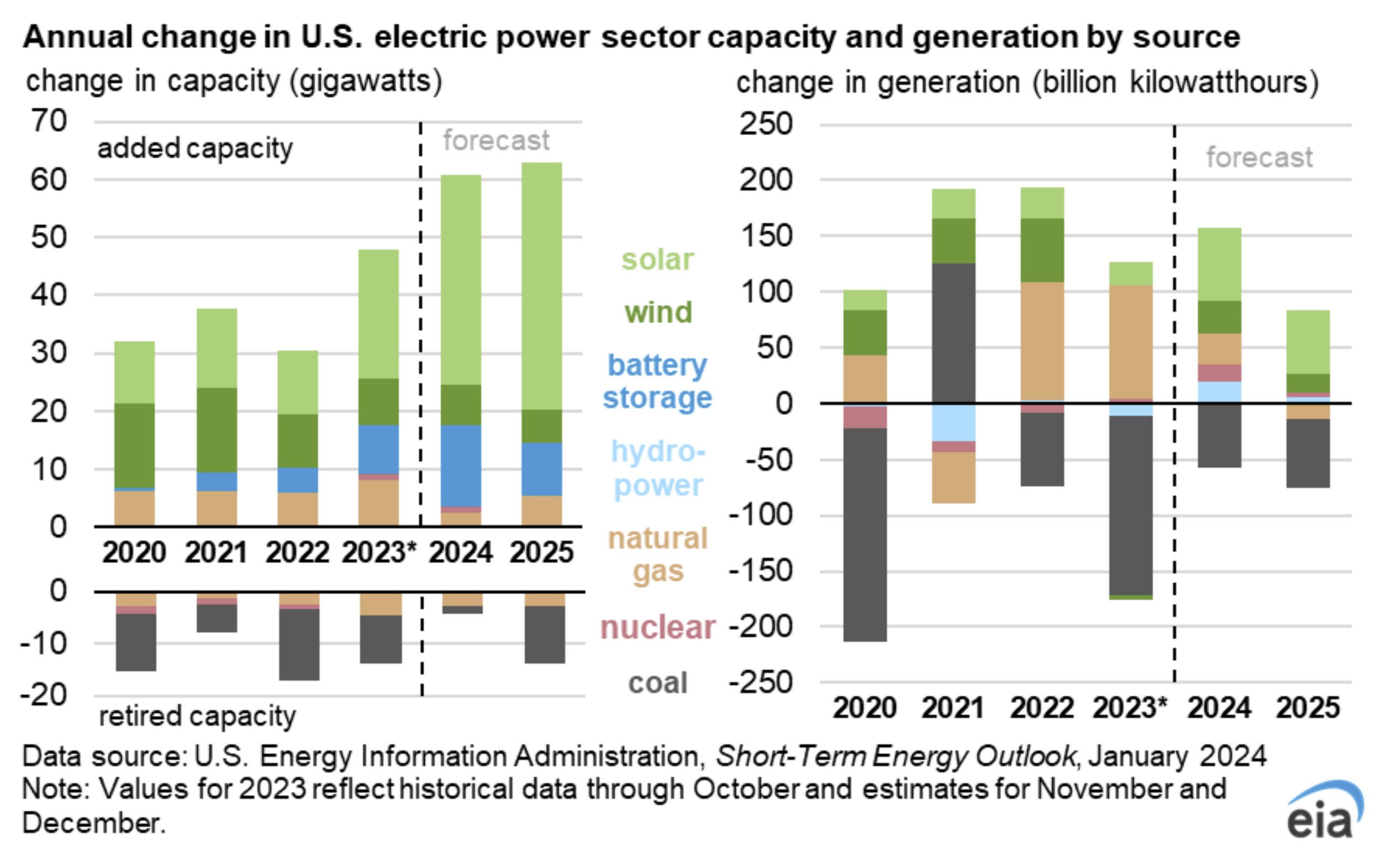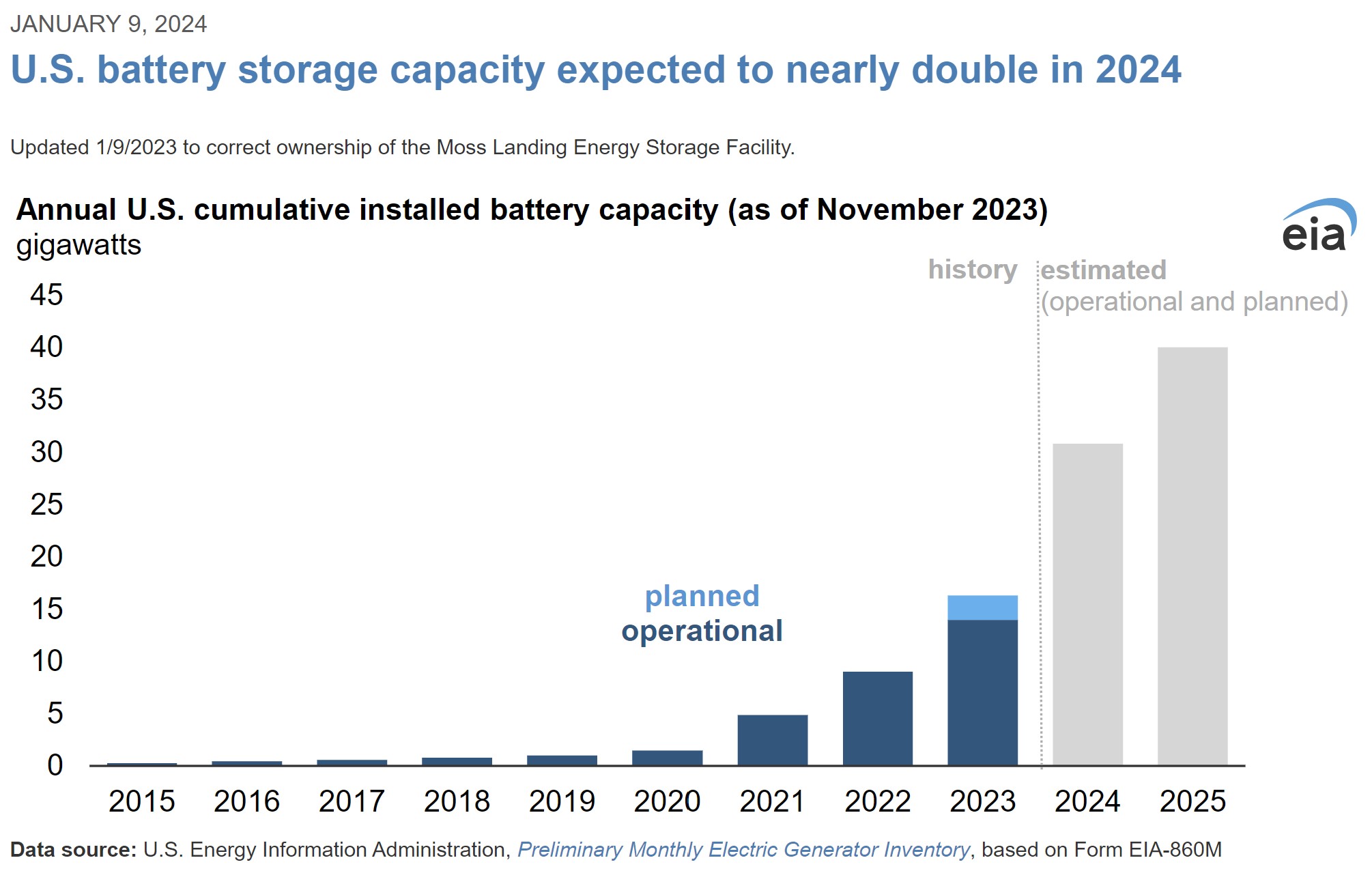Since early 2003, the United States has retired the same amount of fossil fueled electricity generation capacity as it has installed, even while the size of the economy has grown by two thirds.
The United States hasn’t built any “net new” fossil electricity generation facilities since early 2003, over twenty years ago. According to the U.S. Department of Energy’s Energy Information Administration’s (EIA) December 2023 860M report, the nation has seen the commissioning and decommissioning of approximately 258 GW of gas, coal, and other fossil capacities.
As fossil fuel generation plateaued, the U.S. embraced renewable energy, bringing 162 GW of solar and 150 GW of wind capacity online. This transition has been running parallel to a surge in economic strength, as well: the nation’s gross domestic product grew more than 67% over an inflation-adjusted $15.5 trillion in 2003 (actual figure $11.4 trillion) to just over $26 trillion by 2023.
The nation’s electricity consumption also increased about 10% over the same period. The annual growth of the formerly nascent wind and solar sectors now far surpasses any foreseeable increase in U.S. electricity consumption.
This shift is leaving fossil fuel plants, particularly those coming online in the past two decades, underutilized and operating at progressively lower capacity factors. Gas peaker plants, which represent a large volume of the new fossil generation, run at capacity factors ranging from 5% to 15% annually.
Analysts at the data analytics firm Rhodium Group reported that over a similar period of time, the U.S. power sector’s annual emissions were cut by 40%, from roughly 2.5 billion to 1.5 billion metric tons. This decrease has occurred while nuclear and hydropower have fallen in output, coal has been replaced by gas, and wind and solar have grown.
Going forward, these patterns are expected to continue: more fossils retiring than being built, coupled with massive amounts of renewables stepping up to take their place.

In 2024, the expected retirement and introduction of fossil fuel plants are projected to offset each other, each contributing less than 5 GW of capacity. However, a shift is anticipated for 2025, with 15 GW of fossils retiring, predominantly coal generation, against the commissioning of just 5 GW of new gas plants.
In stark contrast to the fossil retirements, the U.S. is expecting to install over 100 GWdc of new solar power capacity in 2024 and 2025, bringing the solar fleet to greater than a quarter of a terawatt of capacity. Additionally, the EIA projects 15 GW of batteries to be installed in 2024, followed by much more in the following years.

Although battery storage doesn’t generate electricity, it plays a crucial role in optimizing energy use, storing power during low demand periods and releasing it when demand peaks. These upcoming battery installations are specifically targeting the very high cost electricity required during peak demand periods, areas traditionally serviced by gas peaker power plants operating at modest 5% to 15% capacity factors.



